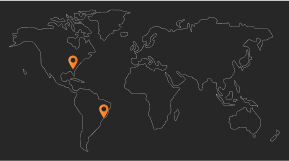The Invisible Operating System: The Future of AI Doesn't Need a Screen

For decades, the evolution of operating systems has been guided by a central premise: mediating the relationship between humans and machines through visual interfaces.
From command lines to touchscreens, every advancement aimed to make computational control more intuitive. However, this logic no longer fits the new era of intelligent computing. We are entering a paradigm in which the next operating system will not be visible, nor designed for humans. It will be built for autonomous agents and will essentially run on the intelligence that drives the world.
Three pillars are shaping this transformation: MCP, A2A, and LOKA. Together, they form the foundation of a new computational infrastructure, distributed, modular, and interoperable, that promises to reorganize the future of artificial intelligence.

In this article, we explore what this means, why this shift is inevitable, and how it redefines the role of operating systems in an increasingly automated world.
The End of the Interface: Who Is the New OS For?
The concept of an operating system has always been tied to the user experience. But when we stop programming for people and start programming for autonomous agents, the logic changes radically.
There’s no longer a need for windows, icons, or even a screen. This new operational layer isn’t meant to mediate between humans and machines, but rather to coordinate machines with each other.
This system is invisible because its presence is only revealed through performance and coordination. It operates behind the scenes of intelligent infrastructures, in data centers, IoT devices, neural networks, and foundation models. Its function is not to display, but to orchestrate. And to do so at scale and reliably, we need more than large models, we need a new architecture.

MCP: The Context Protocol That Organizes Chaos
The Model Context Protocol (MCP) is the backbone of this architecture. It solves one of the main bottlenecks of the agent era: the chaos of formats, structures, and logic that makes interoperability between models and systems a technical nightmare.
MCP acts as the universal USB-C of artificial intelligence. It allows models like OpenAI, Claude, Mistral, and others to communicate with real-world tools and data in a standardized, contextual way.
The beauty of this proposal lies in its elegant abstraction: instead of trying to build an all-knowing model, MCP creates a bridge between diverse intelligences, enabling each to operate with maximum efficiency within its domain.
A2A: Distributed Collaboration Between Agents
In the human world, collaboration requires language, coordination, and trust. It’s no different for autonomous agents. The Agent-to-Agent Protocol (A2A) is the layer that enables multiple agents to operate in networks with clear purposes, without relying on a central point of control.
A2A eliminates the rigidity of pre-programmed workflows and ushers in a new form of emergent, dynamic, and adaptive collaboration. With A2A, agents stop being isolated scripts and begin functioning as intelligent teams that coordinate in real time, adapting their behavior based on environment, goals, and system feedback.
In a world where rigid automations can’t keep up with complexity, A2A’s collaborative flexibility is a quiet revolution.
LOKA: Identity, Ethics, and Security at the Core
Every distributed network requires trust. And trust, in non-human environments, depends on three fundamental elements: verifiable identity, clear intent, and tamper-proof security. That’s exactly what LOKA delivers.
LOKA is more than an identity system, it’s a complete infrastructure composed of four layers:
- Unique identity based on DIDs (Decentralized Identifiers) and VCs (Verifiable Credentials);
- Intentional communication between agents, guided by shared objectives;
- Distributed ethical consensus, ensuring alignment of values between digital entities;
- Cryptographic security that is resistant, even to quantum computing threats.
By embedding these capabilities at the core of agent operations, LOKA ensures that networked actions are not only effective, but also secure, auditable, and aligned with shared principles. In other words, LOKA is what makes collective intelligence viable.
A Stack Already Under Construction
What’s most surprising about this future is that it’s already underway. Companies like Google, SAP, Salesforce, and Langchain are already integrating the MCP + A2A + LOKA stack. Over 50 partners are committed to this architecture, signaling a coordinated and strategic shift toward a new digital infrastructure.
This adoption is not driven by hype, but by a hard truth: the marginal gains of ever-larger models are running out.
The next leap won’t come from isolated algorithmic performance, but from the emergent intelligence of collaboration between specialized agents. MCP, A2A, and LOKA represent this turning point.
Conclusion
The next operating system won’t be a product. It will be an invisible infrastructure that organizes autonomous agents to act with context, ethics, and collaboration. MCP turns chaos into architecture. A2A solves coordination. LOKA guarantees trust. Together, they form what we might call the “distributed brain of the digital world.”
To ignore this transition would be the equivalent of ignoring the internet in 1994. For anyone working with AI, integration, and automation, the MCP + A2A + LOKA stack is not just the future, it’s the new present.
PS: This article was inspired by the tweet: https://x.com/0xTyllen/status/1917582265720406481
